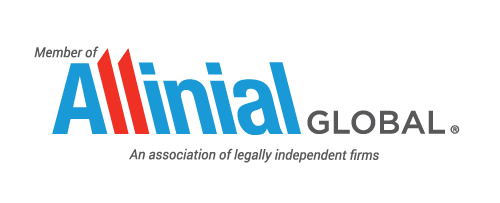The Greater Bay Area Initiative – An Overview with a German Focus
The Guangdong – Hong Kong – Macau Greater Bay Area Initiative (also known as Greater Pearl River Delta Initiative) is an advanced version of the Pearl River Delta Initiative, which aimed mainly the mainland Chinese part of the region. The new initiative was first brought up in the 13th five-year plan (2016 – 2020) of China. In contrast to its predecessor, the Bay Area Initiative intends to highlight the region’s role and aspiration in the global economic supply chain, such as other bay area regions like San Francisco or Tokyo, and also emphasizes the inclusion of the Special Administrative Regions Hong Kong and Macau. Besides this two cities, the city cluster includes nine Chinese cities in the Pearl River Delta (Shenzhen, Guangzhou, Zhuhai, Zhaoqing, Dongguan, Huizhou, Foshan, Zhongshan, Jiangmen) and wants combine each city’s expertise. The key industries of the area, which are very competitive on the global stage, are manufacturing (high-tech), transportation (sea and air cargo services), trade-related services (sourcing, trading, freight-forwarding, finance etc.) as well as the digital and innovation industry.
The Greater Bay: Numbers and Facts
- In the “Chinese Cities of Opportunity 2017” survey, conducted by PwC and the China Development Research Foundation, Guangzhou and Shenzhen occupying the top seats in the overall ranking. The survey compares the opportunities of 28 Chinese regional centers (Beijing and Shanghai not included) in ten sub-categories. It is noteworthy, that either Guangzhou or Shenzhen are leading eight out of ten categories, including: ease of doing business, intellectual capital and innovation, technology readiness and economic clout.
- The Pearl River Delta has more than 60 million inhabitants, which is comparable to the population of the United Kingdom. The population of Guangdong province, where the Bay Area is located, together with that of Hong Kong and Macau counts more than 110 million people. By the way of illustration the German-speaking population in Europe has roughly the same number.
- By end of 2016, 275 Fortune Global 500 firms had invested in Shenzhen, and more than 280 in Guangzhou. 15 Chinese Fortune Global 500 firms are headquartered in the region (six Hong Kong, five Shenzhen, three Guangzhou, one Foshan).
- The average GDP (107,011 RMB) in 2015 was 2.2 times higher than China’s national average (49,992 RMB). Shenzhen’s per capita GDP with around 26,000 USD$ in 2015 was the highest among all mainland Chinese cities.
- In 2015, the Pearl River Delta region (without Hong Kong and Macau) generated 9.1% of China’s GDP (Guangdong, which generated 11% in that year, leads this category for 27 consecutive years among all Chinese provinces). In addition, the region accounted for 7.5% of China’s total retail sales of consumer goods with only 4.3% of the country’s population.
- Shenzhen holds rank #3 and Hong Kong rank #5, followed by Guangzhou on rank #7 of the world’s busiest container harbors (2016).
- Hong Kong ranks #6 and Shenzhen #8 of the world’s biggest stock-exchanges by market capitalization.
- With Hong Kong and Macau, the area is globally the most integrated economic city cluster in Greater China.
Hong Kong’s Role in the Integration of the Pearl River Delta with the World
- Since 1979, 63% of all foreign investment in Guangdong came from Hong Kong.
- The city is the biggest offshore Renminbi center in the world and its financial institutions offer trade settlement and other financial products in Renminbi.
- Not only the financial expertise is outstanding in Hong Kong, but also the legal system satisfies the highest international standards.
- The knowledge on implementation of trade and investment rules regarding China and their alignment with the globe has a top position worldwide.
- The most important part in the integration of the Pearl River Delta with Hong Kong and the world is the Closer Economic Partnership Agreement (CEPA). It grants in Hong Kong incorporated companies exclusive market access to China for certain industries and products. Especially foreign invested businesses in Guangdong free trade zones can take advantage of CEPA.
The 13th Five Year Plan: Indications for investments in China
The motto of the 13th Five Year Plan is “moderate prosperity for the masses”. To reach this target, China should double its GDP and per capita income by 2020 compared to 2010. That very ambitious goal should be reached under the catchphrases “innovation, coordination, green development, sharing and opening”. The Chinese leadership made a priority ranking of industries which should receive special promotion until 2020. The top 10 are:
1. Next generation information technology
2. Numerical control tools and robotics
3. Aerospace equipment
4. Ocean Engineering equipment and high-tech ships
5. Railway equipment
6. Energy saving and new energy vehices
7. Power equipment
8. New materials
9. Medicine and medical devices
10. Agricultural machinery
It can be expected that the demand in products and services related to above mentioned will be high during the next years.
Business Opportunities in the Greater Bay Area
As indicated in the three paragraphs before, the Bay Area offers huge potential for investments in either manufacturing, services, procurement or as a selling market especially in regard of the industries promoted in the 13th Five Year Plan. Shenzhen is famous for its high-tech manufacturing opportunities, telecommunication, financial and logistics industries. Renowned global enterprises such as ZTE and Huawei are headquartered there and many international firms have regional operations in the city. E.g. Siemens, ranking #71 on the Fortune Global 500 invested in a medical research center in 2013, followed by the establishment of its Health Care Imaging Customer Center, a facility where medical professionals can study the company’s newest MRI and X-ray technologies. It offers the company a show case for its locally manufactured high-tech medical devices.
The opportunities in Guangzhou are not less plentiful. The city is famous as car manufacturing base of mainly Japanese brands, namely Honda and Toyota. Another big industry is the oil refining and chemical industry. Global players such as British Petroleum, Royal Dutch Shell or BASF are big investors in the city. E.g. BASF started its investment in the region in 1998 and expanded its manufacturing base steadily over the last years. In 2015, they formed a joint venture and bought out a Chinese chemical manufacturer to expand its manufacturing base in the region. Beside these industries, targets for investments are bio-science, as well as the transportation and logistics industries, especially in regard of e-commerce and cargo.
Not only Shenzhen, Guangzhou and Hong Kong give the region unique opportunities. Cities such as Dongguan, Foshan and the others on the Chinese mainland have huge capacities in regard of factories and assembly lines. It is possible to produce high quality products on a large scale. Dongguan has the fourth highest exports of all Chinese cities, which clearly shows it role as a manufacturing base for the global market.
German Business in Guangdong and the Greater Bay Area
According to the AHK-China Business Confidence Survey 2016, the importance of the Pearl River Delta region for German enterprises in China ranks #3 just behind the Yangze Delta (Shanghai, Jiangsu, Zhejiang) and the Bohai Rim (Beijing, Tianjin, Liaoning, Shandong, Hebei). In 2015, goods of 15.7 billion US$ (+3.48% to 2014) in value has been exported from Guangdong to Germany and an amount valued 7.5 billion US$ (-10.92% to 2014) has been imported from Germany. The foreign direct investment from Germany to Guangdong counted 339 million US$ in 2015. More than 600 German enterprises are located in Guangdong of which 52% are manufacturing businesses and 48% related to services and representative offices.
According to the Hong Kong Census and Statistics Department the total trade volume with Germany was around 14.3 billion EUR in 2015, which ranks #1 in the European Union. More than 500 German companies are located in Hong Kong, which are mainly engaged in financial services, consulting and logistics.
Conclusion and Future Perspective
The Greater Bay Area will play a remarkable role in China’s economic integration with the world. The nine cities on the mainland and their industrial zones provide knowledge and expertise in manufacturing electronic, chemical, automotive and other high-tech products for the domestic and world market. A mature innovation and start-up culture mainly concentrated in Shenzhen and Guangzhou will accelerate the future development of the region. Hong Kong will keep playing a key role in that development through its outstanding connectivity and expertise in the finance industry. In the wake of China’s One Belt One Road Initiative, the products and services of the area and its professions will be in high demand to contribute this epic project.


